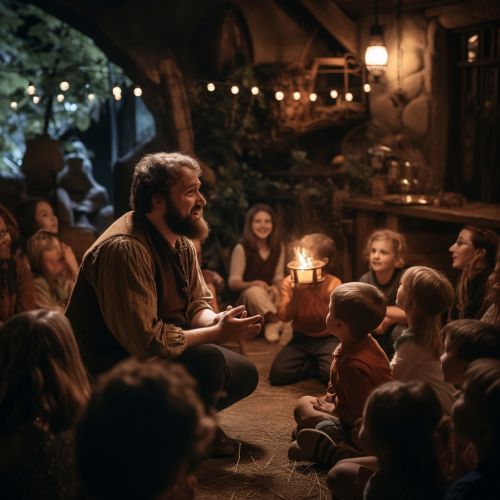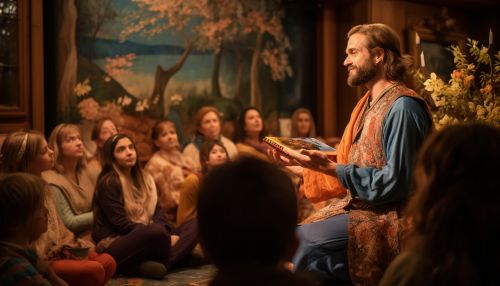Folktales
Introduction
Folktales, also known as folklore, are a collection of stories passed down through generations, primarily by oral tradition. These tales, rich in cultural significance and historical context, often contain moral lessons, supernatural elements, and archetypal characters. Folktales are a significant part of many cultures, providing a glimpse into the beliefs, customs, and values of societies.


Origin and History
The origin of folktales dates back to ancient civilizations, where storytelling was a common form of entertainment and education. The earliest known folktales were found in ancient Mesopotamian civilization, dating back to 2000 BC. These tales were often inscribed on clay tablets and shared during communal gatherings.
Over time, folktales spread across continents and cultures, adapting to local customs and beliefs. The advent of written language allowed these tales to be recorded and preserved, leading to the creation of vast collections of folktales worldwide.
Types of Folktales
Folktales can be broadly categorized into several types, each with its unique characteristics and themes.
Fairy Tales
Fairy tales are a popular type of folktale that features magical and fantastical elements. These tales often involve royalty, mythical creatures, and magic, with a clear distinction between good and evil. Famous examples include "Cinderella," "Snow White," and "Sleeping Beauty."
Fables
Fables are short tales that convey a moral lesson, often through anthropomorphic animals. The most well-known collection of fables is Aesop's Fables, credited to the ancient Greek storyteller Aesop.
Legends
Legends are semi-true stories that have been passed down through generations. They are rooted in historical fact but often contain fantastical elements. Legends typically involve heroic figures or significant historical events.
Myths
Myths are traditional stories that explain natural phenomena, customs, or traditions. Myths often involve gods, goddesses, and other supernatural beings.
Cultural Significance
Folktales play a crucial role in preserving cultural heritage and identity. They reflect societal norms, values, and beliefs, providing a window into the cultural context of a society. Folktales also serve as a tool for moral and social instruction, imparting wisdom and life lessons to younger generations.
Folktales Around the World
Folktales vary widely across different cultures, reflecting the diversity of human experience and imagination.
African Folktales
African folktales, such as the Anansi stories from West Africa, often feature trickster figures and moral lessons. These tales were traditionally shared orally and continue to be a vital part of African culture.
Asian Folktales
Asian folktales, such as the Jataka tales of India and the Momotaro story from Japan, often incorporate moral and philosophical teachings. These tales often feature animals, supernatural beings, and heroic figures.
European Folktales
European folktales, such as the Grimm's Fairy Tales from Germany and the Hans Christian Andersen's tales from Denmark, often feature magical elements, royalty, and clear moral lessons.
Modern Influence
Folktales continue to influence modern literature, film, and popular culture. Many classic fairy tales have been adapted into animated films, while elements of myths and legends can be found in fantasy literature and video games.
See Also
Conclusion
Folktales are a rich and diverse form of traditional literature, reflecting the beliefs, values, and imagination of cultures around the world. They continue to captivate audiences with their timeless themes and characters, preserving cultural heritage and influencing modern media.
